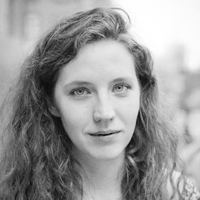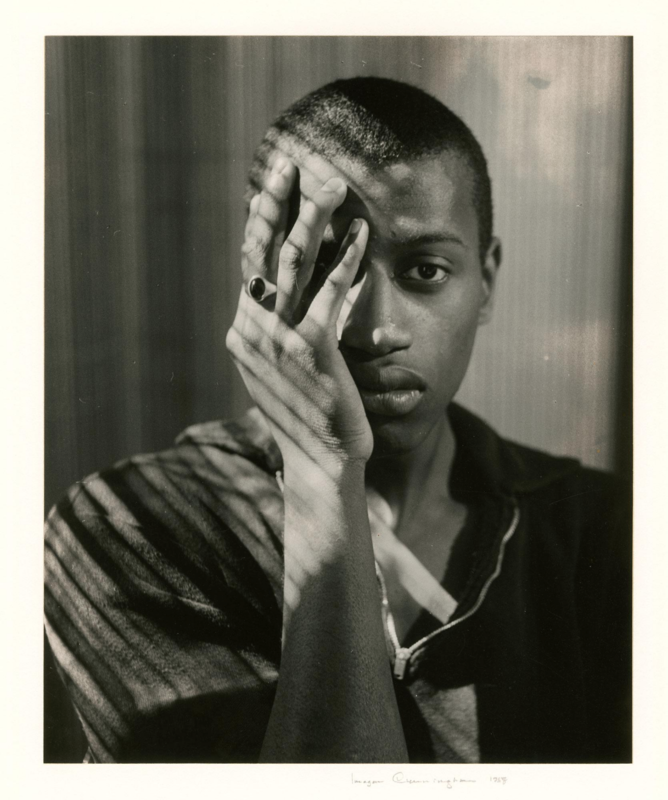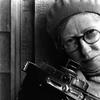More about Stan (Shadow of Hand)
- All
- Info
- Shop

Contributor
Imogen Cunningham took photos of many a person, place and plant (sooooo many plants).
But when photographing humans, she relied heavily on models. Many became favorites and reappeared in her work over the years. Stan appeared in at least two more of her photos.
Cunningham’s work isn’t talked about as overtly political. Her photography gang, known as f/64, is seen mostly as an aesthetic movement (at least in contrast with the socially conscious documentary photography that was simultaneously growing popular). But, at a mid-century moment when American race relations were particularly fraught, Cunningham didn’t shy away from working with diverse models. And in her personal life, she made time for activism. Hansel Mieth captured an image of her marching for civil rights in San Francisco in 1962.
So, although Cunningham’s political ideologies are only subtly suggested in her work, this portrait, taken in 1958, provokes reflection on the cultural moment in which Stan posed. We see his young, Black face gazing out from behind a sunlight-dappled hand, his eyes direct and level. Are Stan’s poignantly obscured features simply for the sake of Cunningham’s signature formal drama? Or, was she making an observation about the increasing visibility of African American identity at a time when the US was on the verge of a major civil rights movement?
Cunningham once commented, “People cannot accept themselves as they really are, and that’s the problem of a portrait photographer.” In the case of this photograph and its broader cultural context, that sentiment might have referred more to the viewer than the subject.
Sources
- “Featured Portrait Photographs.” Imogen Cunningham Trust. Accessed December 20, 2017. https://www.imogencunningham.com/portraits/
- “Hansel Mieth.” International Center of Photography. https://www.icp.org/browse/archive/objects/san-francisco-civil-rights-p…
- “Imogen Cunningham: The obstacles of portrait photographers.” SF MoMA. Accessed December 20, 2017. https://www.sfmoma.org/watch/imogen-cunningham-the-obstacles-of-portrai…
- “Museum of Fine Arts, Boston, Showcases Pioneering Photographer Imogen Cunningham.” Museum of Fine Arts Boston. Accessed December 20, 2017. http://www.mfa.org/news/imogen-cunningham
- Selz, Peter Howard, Susan Landauer. Art of Engagement: Visual Politics in California and Beyond. University of California Press. Berkeley: 2006.












